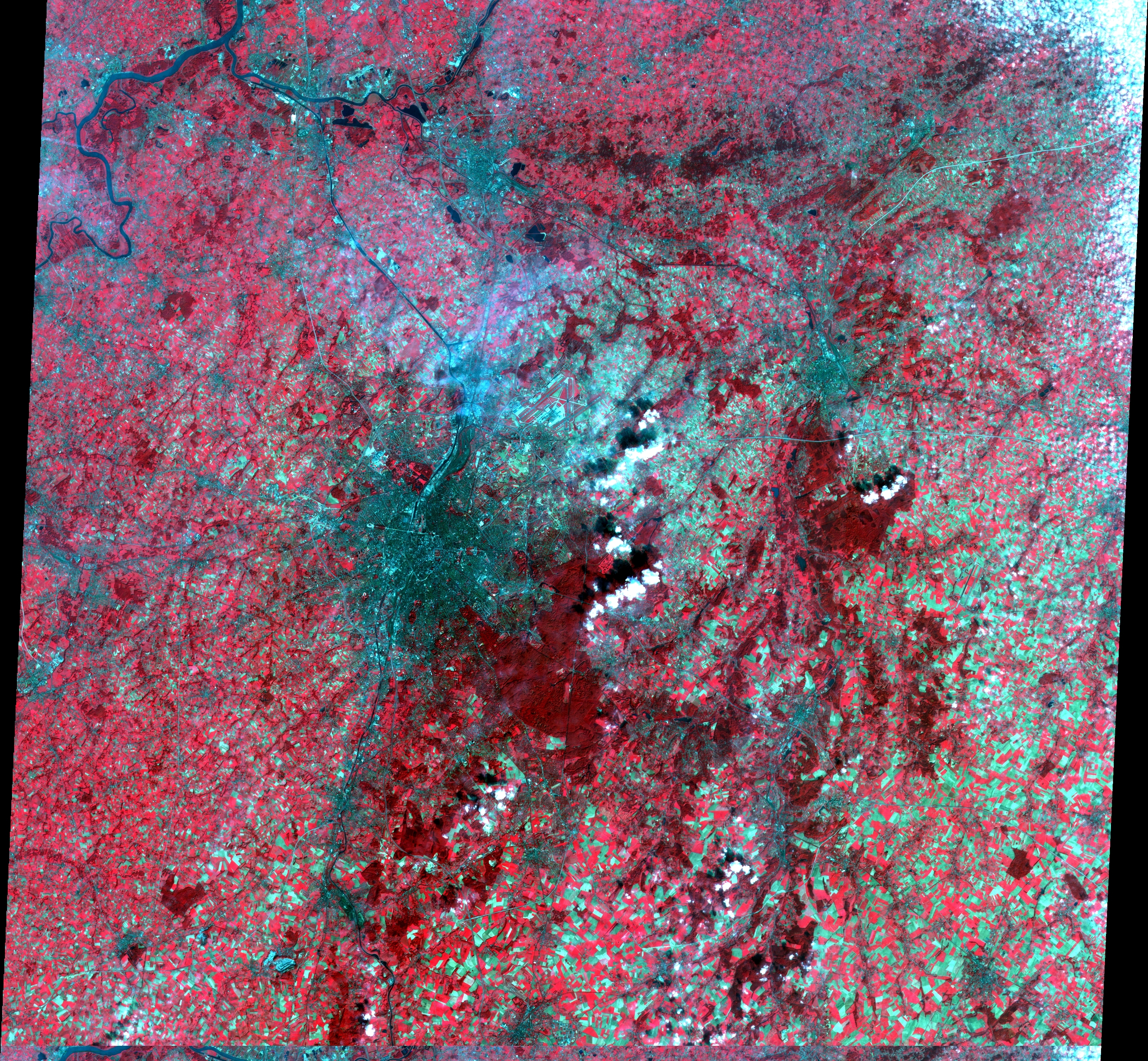Since 1978, Belgium has been cooperating with France in the field of Earth Observation. Along with Sweden, the two countries concluded an agreement on developing a family of satellites providing high resolution images for civilian uses, known as SPOT (Satellite pour l'observation de la Terre). The agreement implementation was entrusted to the Belgian Federal Science Policy Office and CNES (Centre national français d'études spatiales).
The first satellite, SPOT 1, was launched in 1986, embarking two identical high resolution optical imaging instruments, which could operate in either panchromatic (10 m resolution) or multispectral mode (20 m resolution). Since then, four more SPOT satellites have been launched under the wings of CNES, with co-funding by Belgium. With the retirement of SPOT 5 in May 2014, CNES terminated its SPOT programme, but two new satellites, SPOT 6 and 7, have since been launched by the private company Airbus D&S. They are still operational today and cover up to 6 million km² every day with a resolution of 1,5 m. SPOT 6 and 7 operate in tandem with the 1 m resolution TerraSAR-X and tanDEM-X radar satellites of DLR and with the very high resolution Pléiades-1A and -1B satellites.
VEGETATION progamme

The SPOT VEGETATION sensors were carried aboard SPOT 4 and 5 which were launched in 1998 and 2002 and operational until 2013 and 2014 respectively. Unlike the other high resolution SPOT sensors, the VEGETATION instruments delivered images with a resolution close to 1 km and a ground swath width of 2200 km. They were specially designed to study the state of vegetation at regional and continental scales and to track its spatial and temporal evolution.
One of the most important contributions of Belgium in the VEGETATION programme is the funding and the hosting of the image processing centre (CVB) which processes, distributes and archives the data products since the beginning of the programme.
While the continuity of the SPOT programme's high resolution observation instruments is ensured by the Pléiades system, the continuity of the VEGETATION programme is guaranteed by ESA's “made in Belgium” PROBA-V satellite, in orbit since 7 May 2013, and by the two-satellite Sentinel-3 mission within the Copernicus programme. Sentinel-3A has been in orbit since 16 February 2016 and Sentinel-3B since 25 April 2018.






